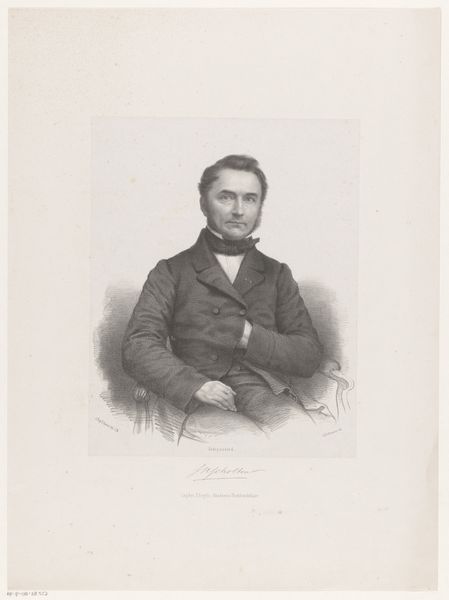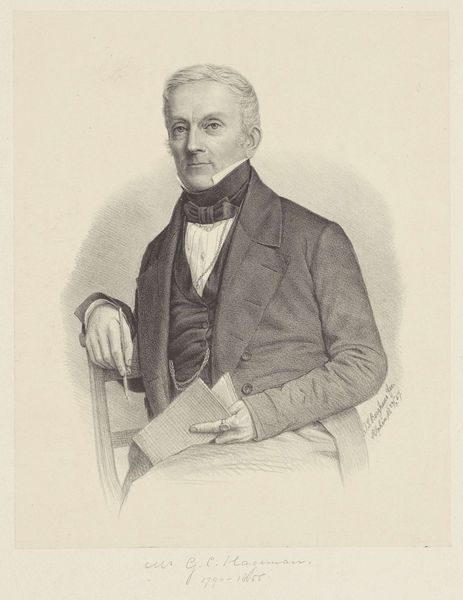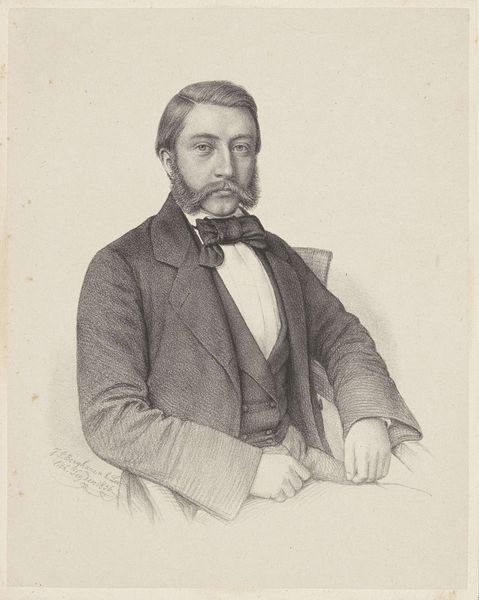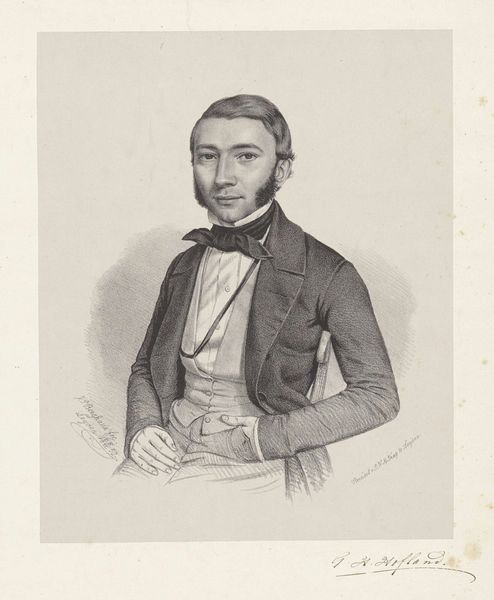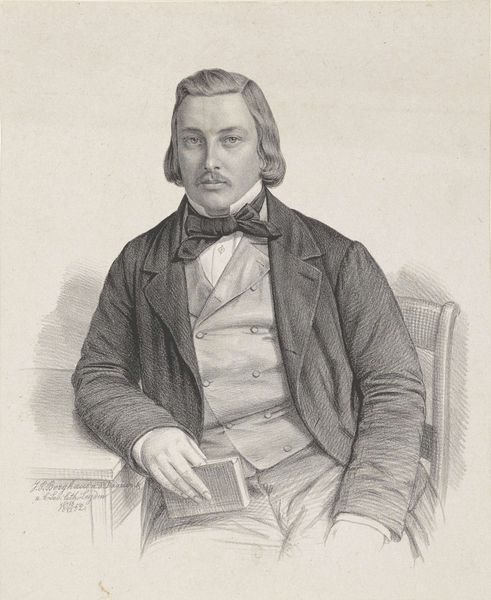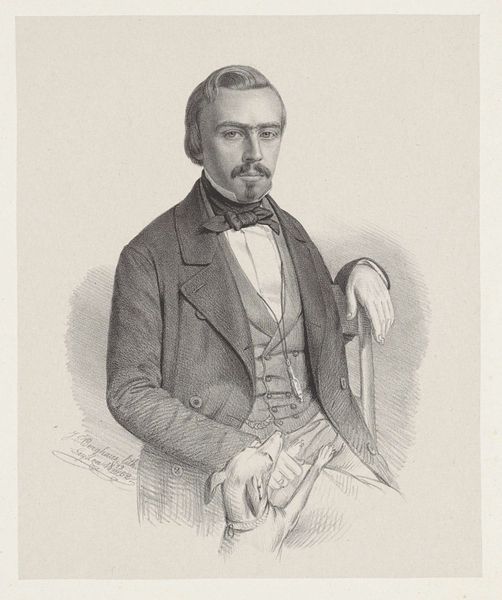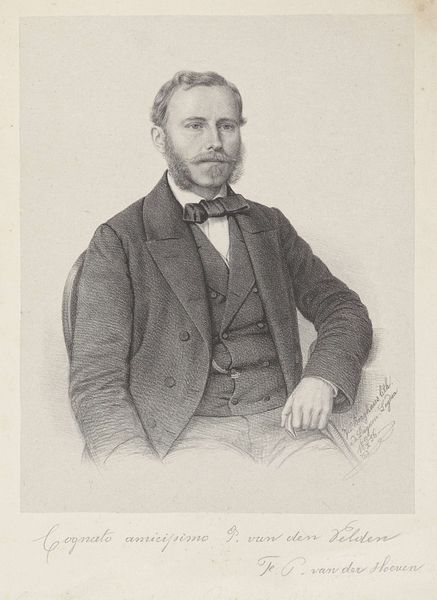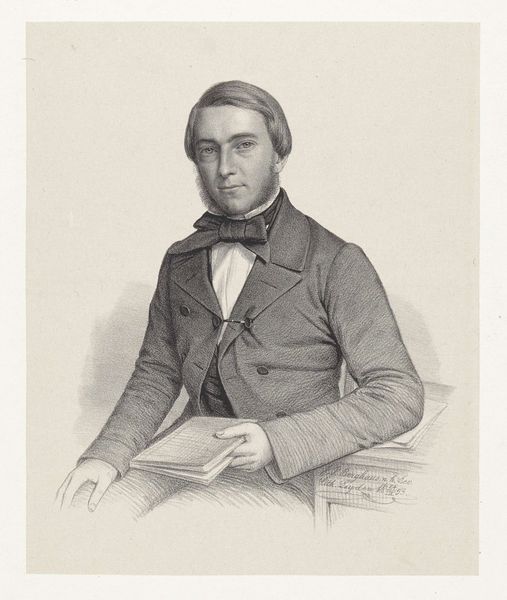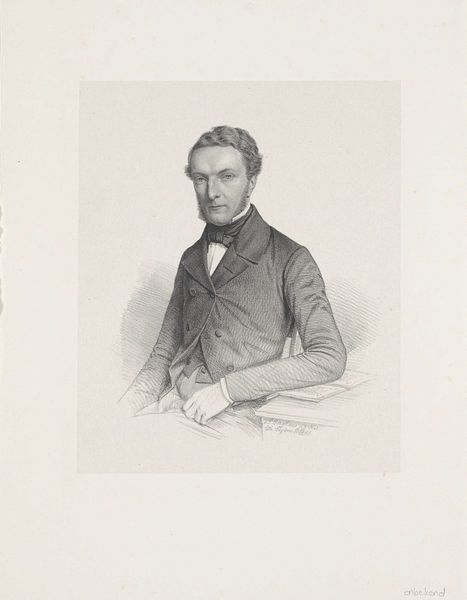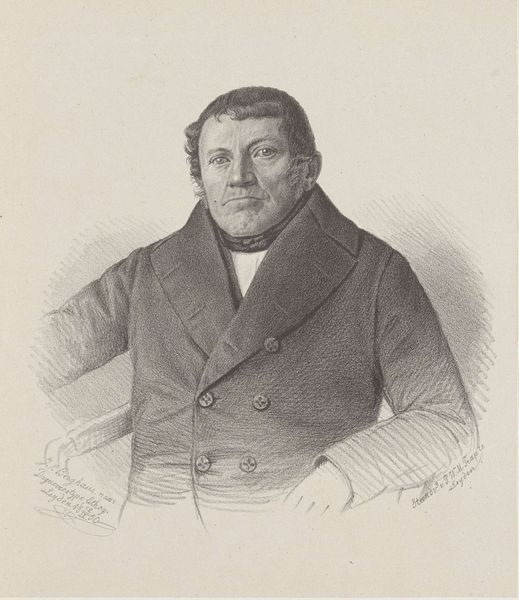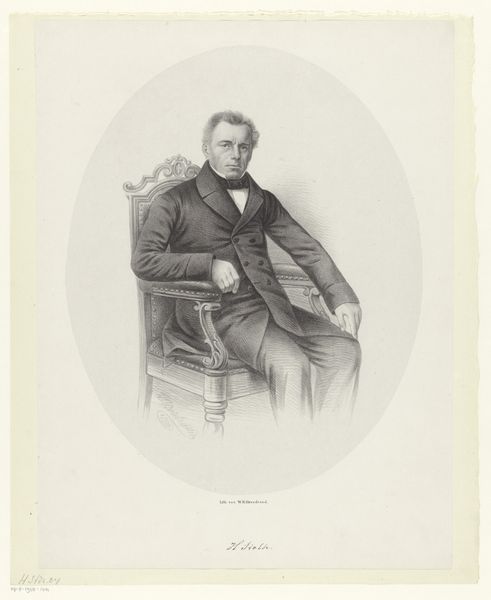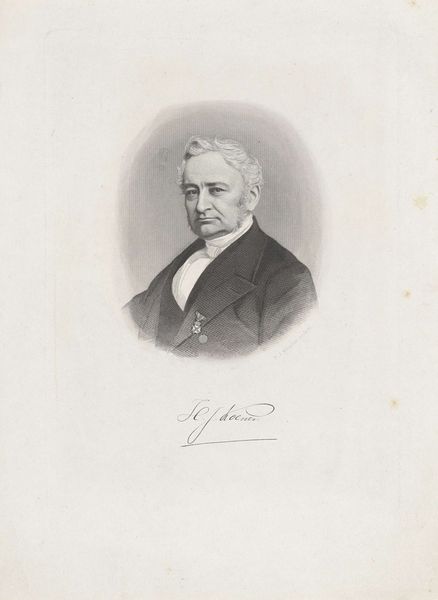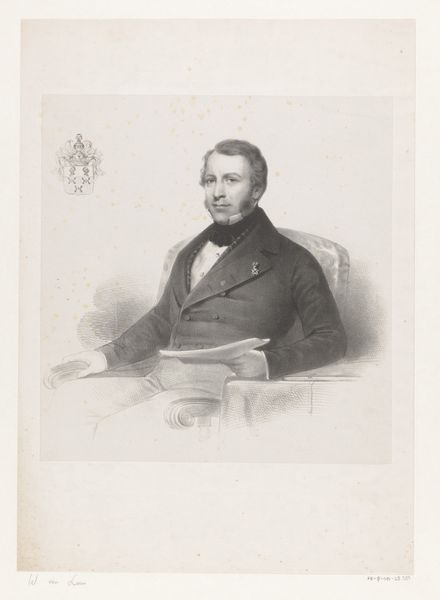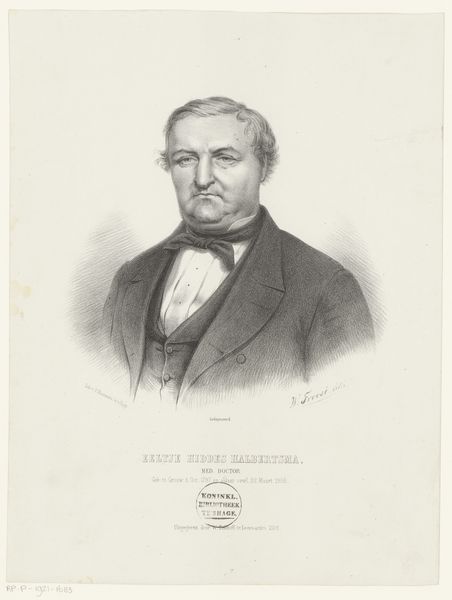
drawing, graphite
#
portrait
#
drawing
#
pencil drawing
#
graphite
#
portrait drawing
#
academic-art
#
realism
Dimensions: height 198 mm, width 137 mm, height 336 mm, width 256 mm
Copyright: Rijks Museum: Open Domain
Editor: So, here we have Johann Peter Berghaus's graphite portrait of Johannes Henricus Scholten, possibly from the late 1860s. It's really quite detailed; the rendering gives such a tactile feel to the fabrics and textures. How do you approach a piece like this from a critical perspective? Curator: Examining the drawing's intrinsic elements reveals Berghaus's mastery of tonal modulation. The gradations achieved with graphite—consider the smooth skin juxtaposed with the textured jacket—establish a dynamic visual rhythm. Note how line is deployed, varying between the sharpness defining the sitter’s features and the soft hatching suggesting shadow. Editor: I see that, especially the contrast between the face and the coat, it really makes him pop. Do you think there's a reason Berghaus chose such a limited color palette? Curator: "Color palette" perhaps presupposes the presence of color. This is a drawing, an exploration of form through value. Restricting the work to graphite encourages closer attention to the relationship between light and shadow and how it defines spatial volume. It is the artist showing virtuosity of a medium through its capacity to imitate three dimensions on a two-dimensional surface. What do you make of the overall composition? Editor: I think it's really formal but in an accessible way. It seems that Berghaus emphasizes the sitter’s face, leading the eye through a carefully constructed path across the figure. That approach feels really precise. Curator: Indeed. This precision, born of close observation and controlled execution, aligns with Academic artistic principles prevalent in that period. Reflect on the lines; what semiotic meanings do they suggest when viewed through the lens of Academic formalism? Editor: Seeing it that way, the rigidness communicates the social position of the sitter. It has taught me how formal elements contribute so much to the overall impact. Curator: Exactly. By scrutinizing these technical and structural components, we glean significant insights beyond simple representation.
Comments
No comments
Be the first to comment and join the conversation on the ultimate creative platform.
